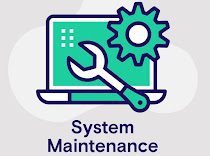- ISA(Industry Standard Architecture)
- EISA(Extended Industry Standard Architecture )
- PCI (Peripheral Component Interconnect)
Short for Industry Standard Architecture, ISA was introduced by IBM and headed by Mark Dean. ISA was originally an 8-bit computer bus that was later expanded to a 16-bit bus in 1984. When this bus was originally released, it was a proprietary bus, which allowed only IBM to create peripherals and the actual interface. However, in the early 1980s other manufacturers were creating the bus.
In 1993, Intel and Microsoft introduced
a PnP ISA bus that allowed the computer to automatically detect and
setup computer ISA peripherals, such as a modem or sound card.
Using the PnP technology, an end-user would have the capability of connecting a
device and not having to configure the device
using jumpers or dip switches.
All modern computers no longer have ISA
slots and instead utilizing PCI slots. Below is an example an ISA
expansion card and ISA slot it connects into on the motherboard.
EISA(Extended Industry Standard Architecture )
Extended Industry Standard Architecture
(EISA) is a bus architecture that extends the Industry Standard Architecture
(ISA) from 16 bits to 32 bits. EISA was introduced in 1988 by the Gang of Nine
- a group of PC manufacturers.
EISA was designed to compete with IBM’s Micro Channel Architecture (MCA) - a
patented 16 and 32-bit parallel computer bus for IBM’s PS/2 computers. EISA
extended the advanced technology (AT) bus architecture and facilitated bus
sharing between multiple central processing units (CPU).
EISA is also known as Extended ISA.
The EISA bus is compatible with older ISA buses with 8-bit or 16-bit data paths. Two 32-bit data path slots are the same width as one 16-bit ISA slot. However, EISA bus slots are deeper than 16-bit slots because 32-bit circuit board edge connectors have long fingers deep inside the EISA slot that connect to the 32-bit pins. The 16-bit circuit board partly extends to the 16-bit pins with a shallow connection.
PCI(Peripheral Component Interconnect)
PCI is a local computer bus for attaching hardware devices in a computer and is part of the PCI Local Bus standard. The PCI bus supports the functions found on a processor bus but in a standardized format that is independent of any particular processor's native bus. Devices connected to the PCI bus appear to a bus master to be connected directly to its own bus and are assigned addresses in the processor's address space. It is a parallel bus, synchronous to a single bus clock.
Attached devices can take either the form of an integrated circuit fitted onto the motherboard itself (called a planar device in the PCI specification) or an expansion card that fits into a slot. The PCI Local Bus was first implemented in IBM PC compatibles, where it displaced the combination of several slow ISA slots and one fast VESA Local Bus slot as the bus configuration.





0 Comments
Tell us your queries or more topics which you want